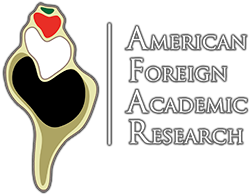Summary of the 9th Annual Maya at the Lago Conference
by
Maxime Lamoureux-St-Hilaire, Ph.D.
Visiting Assistant Professor, Anthropology Dept., Davidson College
George Stuart Residential Scholar, Boundary End Center
Publications Director, AFAR
The 9th Annual Maya at the Lago Conference was held at Davidson Day School from April 25-28, 2019. This year, this legendary conference was co-organized by Mat Saunders (AFAR; Davidson Day School), Maxime Lamoureux-St-Hilaire (Boundary End Center; AFAR; UNC-Asheville), and George Bey (Millsaps College), and highlighted recent research in the Northern Maya Lowlands. The many participants to the conference heard from 16 different presenters about all aspects of the archaeology and epigraphy of the Northern Yucatán Peninsula.
Recent research by Jeffrey Glover (Georgia State University) highlighted sociopolitical trends on the northern coast of the peninsula, especially during the Classic Maya collapse. Investigations by Scott Hudson (University of Kentucky), Barry Kidder (University of Kentucky), Alejandra Alonso (INAH), and Travis Stanton (UC-Riverside) are documenting sociocultural and economic trends for the Preclassic and Classic Periods in the continental Northern Yucatán. Yet, the clear focus of this conference was the hilly Puuc Region of Yucatán, especially the many recent discoveries made by the Bolonchen Regional Archaeological Project. This project, co-directed by Tomás Gallareta Negrón (INAH), George Bey, and Bill Ringle (Davidson College), has been investigating the rise and fall of ancient Maya civilization in the fertile valleys and dry hilltops of the Puuc area. These co-directors, along with Rossana May Ciau (INAH), reported on the impressive results of the recent LiDAR Survey of the Bolonchen region and on the changing palatial architecture at the site of Kiuic. Additionally, Ken Selligson (University of Southern California) reported on economic aspects of Classic Maya society, while Evan Parker (Tulane University) and Melissa Galván Bernal (Tulane University) discussed the foundation and development of Middle Preclassic Puuc communities. In addition Meghan Rubenstein (Colorado College), provided an art-historical perspective on the famous buildings of the Puuc site of Kabah, located northwest of the Bolonchen region. Jaime Awe (Northern Arizona University) discussed evidence for interaction between the Classic Period Maya people of Belize and Northern Yucatán. Finally, Stan Guenter (AFAR) and Marc Zender (Tulane University) investigated the links between the Toltecs and Chichen Itza Maya, along with the epigraphic subtleties of portrait-glyphs during the symposium. The two epigraphers also led two workshops on the inscriptions of Northern Yucatán and the site of Ek Balam. It is notable that 10 of the M@L participants had just attended a two-day workshop at the nearby Boundary End Center (BEC), led by David Stuart (UT-Austin) and which investigated the inscriptions of the site of Cobá. This workshop, entitled Maya on the Mountain, was co-organized by BEC's George Stuart Residential Scholars Maxime Lamoureux-St-Hilaire and Mary Kate Kelly (Tulane University).
M@L 2019
Beyond the informative research reports and hieroglyphic workshop of M@L, Mat Saunders also unveiled the new logos for AFAR's field schools and announced the forthcoming publication of the AFAR Field Books, which are tailored for each of the field schools. These useful documents were developed by Lamoureux-St-Hilaire, Saunders, and Guenter, and co-authored by four Davidson Day students – Elizabeth Crispino, Morgan Scott, Mark Breunig, and Jaden Graham – along with some of the AFAR staff archaeologists, Ana Patrícia “Ticha” Magalhães, Catalina Urquijo Álvarez de Toledo, and Christy Pritchard. The Field Books also contain the beautiful illustrations of Davidson Day student Emma Lindquist. Additionally, the new AFAR peer-reviewed journal, The Mayanist, was officially announced. This open-source journal – co-edited by Lamoureux-St-Hilaire and Saunders – will provide a fantastic publication outlet for presenters of the AFAR conference and further establish AFAR as a serious academic institution. Yet, as for any AFAR product, The Mayanist will have its own artistic flair, which will distinguish its papers from those of any other peer-reviewed journals. The first issue of The Mayanist will be available for free download and for hard-copy purchase by the beginning of the 2019 Maya at the Playa conference, next September.
Finally, Christy and Jim Pritchard also coordinated a series of informal presentations given by several of the M@L presenters to the Davidson Day students who will be partaking to the 2019 field schools. Of course, Deb Strachan and Sheila Brady did an amazing work managing the logistics and financial aspects of this year's conference.
As per usual, the M@L presenters and participants gathered for delicious meals at local restaurants where they had the occasion to engage about the scholarly and not-so-scholarly topics raised at the conference. Notable participants to the conference who provided their perspective to these discussions included E. Wyllys Andrews V (Tulane University – former advisor of Bill Ringle) and Christopher Pool (University of Kentucky – former advisor of Mat Saunders).
In conclusion, Bill Ringle – who is retiring from Davidson College – received the Lifetime Achievement Award for his incredible and diverse contributions to the world of ancient Maya archaeology, cartography, and epigraphy. Participants and presenters alike all agreed that the 2019 M@L Conference was a thunderous success, and all returned home with their brains filled with information and ready for some well-deserved rest.

